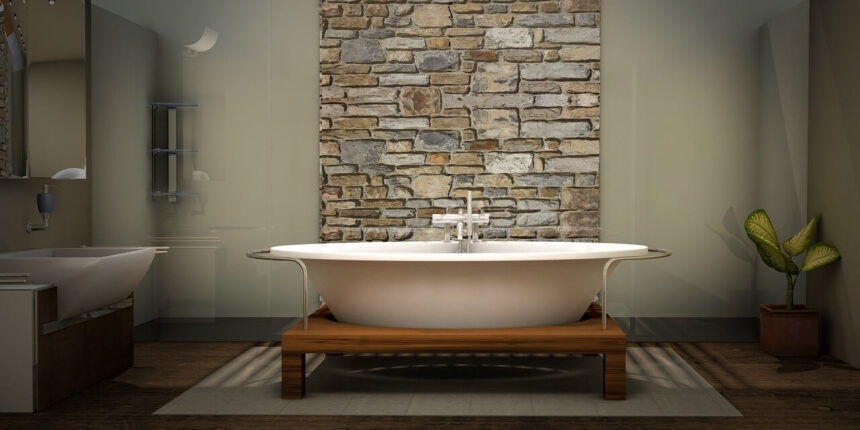Do you ever look at a building and wonder what materials were used to make it? Whether it’s a house, office building, or retail store, each one is constructed using different materials. Some are more common than others, but 17 of Kenya’s most commonly used building materials are here.
They may vary from place to place, but most of these building materials are found across the country.
This, together with price, determine the type of construction materials used in Kenya. It is common to see a combination of different building materials in one house, depending on the budget and available resources.
When investing in real estate in Kenya, it is better to understand the type of materials used in the industry. So, read on whether you’re starting a new construction project or just curious about the process.
Popular Building Materials in Kenya
Here is a list of cheap building materials in Kenya.
1. Cement
The first on our list of building materials in Kenya is cement. Cement is an artificial stone made from limestone and clay.
It can be used as a base or foundation for construction on its own or mixed with sand to create the mortar.
It also hardens when exposed to water and is very strong. Though widely available in metropolitan areas, it is still relatively expensive for most Kenyans.
Cement is usually used when constructing modern buildings’ permanent structures, foundations, and bases.
The use of cement was started in Kenya during British colonial days to build the railway line from Mombasa to Nairobi. You can also find it on many other buildings dating back to that era.
Depending on exposure, you can identify cement structures by their hard, shiny surface and white color (sometimes light brown in older buildings).
2. Sand
Sand, like cement, is a building material in Kenya that is widely used in construction. This is because it has many uses, from filling hollow blocks to improving the strength and hardness of mortar or concrete.
Sand is widely available in Kenya, and bricklayers and construction workers mainly mix it with cement while laying foundations.
Though you can find sand with traces of other minerals, its main component is silica, giving it a bright color ranging from yellow to red depending on the mineral content and source.
3. Building Materials in Kenya – Stone
As a building material, stones are used to construct walls, floors, and sometimes ceilings.
Stones are used all over the country and are readily available, especially in areas with plenty of rock formation.
There are two types of stones in use as building materials in Kenya, these include:
- Machine cut stone
- Manual cut stones
In other places in the world, stones have been used for centuries. The popularity of stone as a building material is attributed to its durability and beautifying effects.
4. Mud and Clay
Mud and clay have been used for years in Kenya, dating back to the pre-colonial period.
Due to this long history, mud and clay are found in most parts of Kenya.
The use of mud as a building material may vary from place to place due to availability.
Also, the type of soil used for construction could affect the overall cost of construction using mud and clay.
Clay is commonly available in most parts of Kenya and is often used with mud to form bricks. Using clay as a building material depends on clay’s availability, source, and cost.
5. Bricks
In the construction industry, brick is an essential building material due to its high strength, resistance to fire, low weight, and ease of laying.
Bricks are made of a mixture of mud, sand, and clay (varying degrees) baked in an oven.
The ancient Romans widely used bricks. Although they have declined in popularity over the years, bricks are still essential building materials in Kenya with unique properties.
They can be used for building houses, walls, and even paving. They are also trendy in the construction of flooring.
Bricks usually come in shapes such as rectangular (which can be used for laying on their own) or hexagonal, which are used to form a wall when laid side by side.
6. Timber
Timber is one of the most widely used building materials, both as a single material and in combination with other materials (ex., brick, mud).
The use of timber in construction is characterized by its high resistance to decay, strength, and relative ease of laying due to its lightweight.
Timber is also environmentally friendly since it uses less energy during production than other building materials such as concrete and steel.
Timber is widely available in Kenya, including its dense forests, which give the country a good supply of timber for construction.
7. Building Materials in Kenya – Steel
The use of steel has dramatically influenced modern architecture. It is now used as a structural material in buildings due to its high strength and formability (it can be shaped into different forms).
Although solid, steel is heavier than most building materials in Kenya today.
Steel is also more expensive because it requires a lot of energy during production. This limits its use to high-rise buildings and other structures that require strength.
Steel is usually used with other materials such as concrete, providing the necessary structural stability.
For example, you can use it to reinforce the flooring or walls of a building.
8. Concrete
The most common concrete form is cement mixed with sand, aggregate, and water to form concrete.
Concrete is probably the most widely used building material in Kenya.
It has been in use for over 2000 years. Concrete can be used on its own or with other materials (ex., steel) to enhance its strength and performance.
There are two categories of concrete, they are:
- Plain concrete is just plain cement mixed with sand, aggregate, and water which you can use for general construction purposes.
- Reinforced concrete has steel rods or bars which help reinforce its strength of concrete.
Concrete is relatively cheaper than steel but slightly more expensive than wood. It is durable and fires resilient, making it the most common building material for structures.
9. Bamboo
The use of bamboo in construction has been increasing due to its strength and other unique properties, making it an environmentally friendly option.
Over 40 billion tons of bamboo are produced each year, making it a popular wood alternative.
Bamboo has been used since ancient times as a building material. In Kenya, it is mainly used to make houses, fences, and furniture.
It can also be composted to produce charcoal which you can use to cook food.
Bamboo has several unique properties that make it one of the best alternative materials for wood today, such as:
- It grows very fast and can be harvested and used for construction anytime. In comparison, it takes a lot of years to grow enough wood for use in building houses.
- It is pest-resistant, so it does not require much maintenance like wood.
- Bamboo can last up to 100 years if appropriately kept compared to wood, which usually lasts 20 years.
While the price of bamboo is slightly higher than wood, its fast growth and many other unique properties make it an ideal material for use in construction.
It is also sustainable and environmentally friendly building material.
10. Glass
Glass is a solid material made from sand and crushed quartz. It is used to build windows, bottles, and other products requiring transparency or durability.
Glasses are mostly recycled due to their robust nature, so they need not be produced in large quantities again.
This makes glass one of the best materials for building houses.
In modern construction, glass is an essential material. It is used to make walls or roofs of buildings to provide insulation and protect the inhabitants from rain, cold wind, and sun, among other things.
Although it is solid, glass is also highly fragile. In the olden days, people considered it a luxury due to its high price.
You can wash it with water, but not many domestic detergents. You can also break it easily by dropping it.
11. Metallic Roofing Sheets
Another famous building material in Kenya is Iron sheeting. These sheets are used to cover roofs and provide protection from the rain.
However, they are usually not as strong as concrete roofing materials.
The main advantage of iron sheets is their low price compared to other alternatives (ex. wooden tiles).
In comparison, metallic roofing sheets’ initial cost is relatively higher than other roofing materials.
These sheets are usually painted white or other bright colors to reflect solar radiation and keep the inside of houses cool during hot days.
They are also used as garden fences, sheds, and other uses around homes.
12. Building Materials in Kenya – Roofing Tiles
Roofing tiles are also among the best options for roofing. They are usually available in different sizes, shapes, and colors.
Roofing tiles can be made from clay or concrete (composite concrete), which have excellent durability and fire resistance properties.
Temperatures can quickly rise to 50°C under direct sunlight hence the importance of having a good roof to protect you from heat.
Roofing tiles are preferred because they provide better insulation and protection than iron sheets.
The initial price of using these tiles is very high, especially those made with concrete, but they are relatively cheaper than other options once installed.
As long as there is no leak, these tiles can last many years without much maintenance.
Tiles are usually installed using cement, concrete, and mortar, making them very strong and 100% waterproof.
They also provide a great aesthetic value to your home. Hence they are preferred by most people in Kenya as the best roofing option.
13. Wooden Flooring
As mentioned earlier, wood is a solid material with high durability and is preferred in many construction areas.
Wooden flooring has been used for decades as the best option for houses. Scrap pieces of wood are usually nailed together to make wooden floors.
Wooden flooring can easily get worn out or damaged because it is vulnerable to humidity hence the need for regular maintenance.
It is also prone to cracking and becoming slippery when it gets wet. However, wooden flooring is a classic material that gives you the feel of going back in time.
It is typically used as bedrooms or living rooms but has been replaced by other materials due to its high vulnerability to moisture, termites, and fungi, among other things.
14. Building Materials in Kenya – Acrylic Plastering
This relatively newer material has been used in several homes and buildings instead of mortar plaster, which was not as strong.
These plasters are usually mixed with plastic, resin, or synthetic polymer called “acrylic” plastering.
They are solid due to the binding agents, which make them ideal for walls and foundations.
Acrylic plasters last longer than mortar plaster because they have better abrasion resistance properties; hence they can withstand wear and tear from solid winds, among other things.
However, acrylic plasters are not cheap, but their installation is relatively cheaper when compared to other materials of similar strength.
Acrylic plasters are usually used for walls because they are strong and waterproof. If painted, it can last for many years without cracking or becoming brittle in weather conditions.
They also allow water vapors to pass through the cracks, making them suitable for open-air ventilation homes.
15. Plastic
Plastic materials are widely used nowadays in most construction areas because they are cheap, strong, and resistant to various weather conditions.
You can mold them into various shapes with different uses depending on the type of plastic used.
Polyvinyl Chloride (PVC) is plastic with very high durability and strength; hence it is commonly used in pipe pipes and drainage systems.
It is also used to make water tanks, doors, and windows, among other things.
Polymethyl Methacrylate (PMMA) is a type of plastic that takes a long before degrading; hence, it has been used to make walls and objects that need to last for a long time.
It is also used in manufacturing glass, hence its name “plexiglass.”
Plastic materials are very cheap and resistant to weather conditions, making them ideal for protection from water and termite attacks.
They last longer than most materials because they do not easily crack or break when strong winds and forces attack them.
Plastic materials are used in construction-related structures such as sidewalks and fences, among other things.
They can be molded into different shapes and sizes, depending on the structural design of your house.
They are also preferred for houses that may need to withstand almost any weather condition.
Plastics, however, have poor aesthetics; hence they are primarily associated with temporary structures and those found in poor areas.
16. Thatch
Thatch is made of dried grass, leaves, or reeds that have been woven together to make a material with excellent insulation properties.
They are durable and strong and hence last for a long, especially in the rural areas where they are most used.
They are also resistant to weather conditions, making them ideal for houses in these areas.
You can use thatch materials to make roofs, walls, and floors. Thatch is also a very biodegradable material making it the best option for areas prone to flooding or those with rains frequently.
Thatch materials are usually inexpensive; hence you can use them in houses in rural areas which cannot afford the expenses incurred by other more expensive building materials like concrete.
17. Glazed Ceramic Tiles
These are ceramic tiles that have a glaze. Glazed ceramic tiles give an instant additional value to the house, especially in urban areas where most people like their houses to be attractive and appealing.
They are long-lasting materials because they do not easily break or crack when attacked by strong forces of winds, among other things.
Because these glazed ceramic tiles enhance the house’s appearance, they are therefore used by people who have the means to give additional value to their houses through decorative flooring materials.
They also add to the aesthetics of homes in urban areas; hence, they are widely used in most houses.
However, glazed ceramic tiles can be costly, especially if you want to give your house an attractive appearance.
They are also not ideal for houses in areas susceptible to flooding or rains since these tiles can be easily destroyed when water comes into contact with them.
In most construction-related projects, flooring materials will always need to be used to provide comfort and safety to the occupants.
In most cases, flooring materials are usually preferred for their aesthetic value and ability to withstand various forces of nature.
However, these factors may not be the only ones considered in selecting these materials.
Building Materials in Kenya Conclusion
This article looks at the most common building materials used today in the real estate sector.
We hope that by understanding these materials and how you can use them to build a home for your family or business, you will have more confidence when purchasing materials to construct your new endeavor.
If you are looking for help with any of these topics, please do not hesitate to reach out.
Our team is available 24 hours a day and ready to answer questions about construction methods and techniques and provide quality advice on what would work best for your project based on our years of experience working in Kenya’s construction industry.
Thank you again for taking time from your busy schedule to read through our piece!







